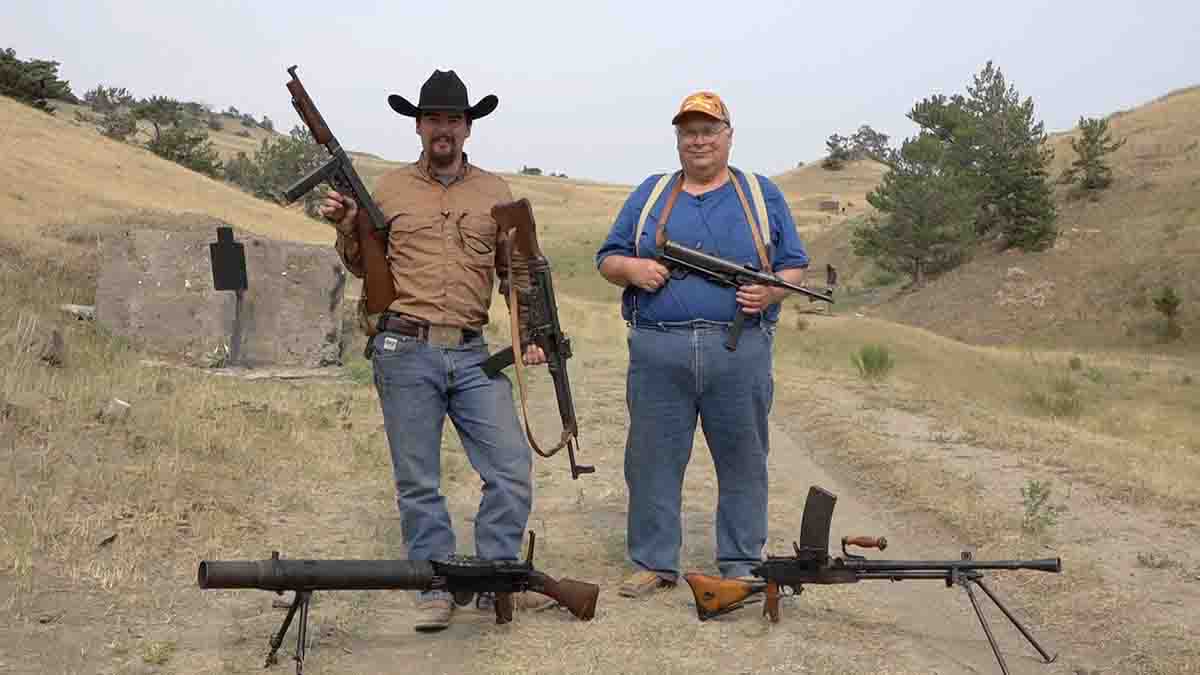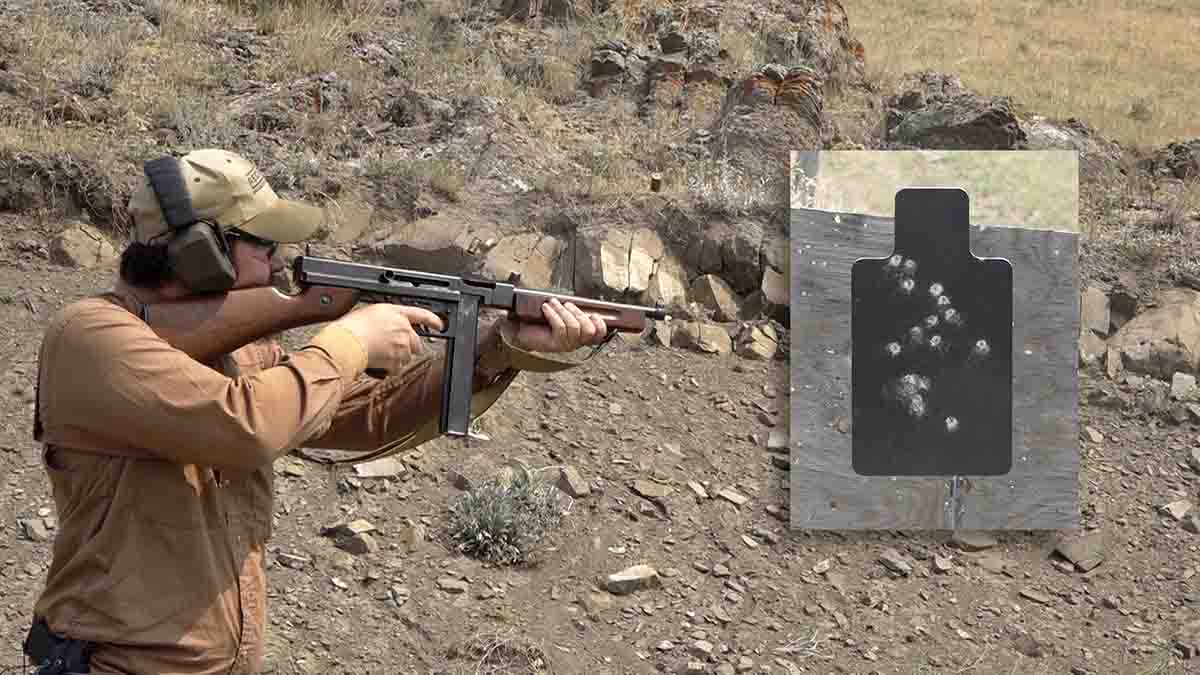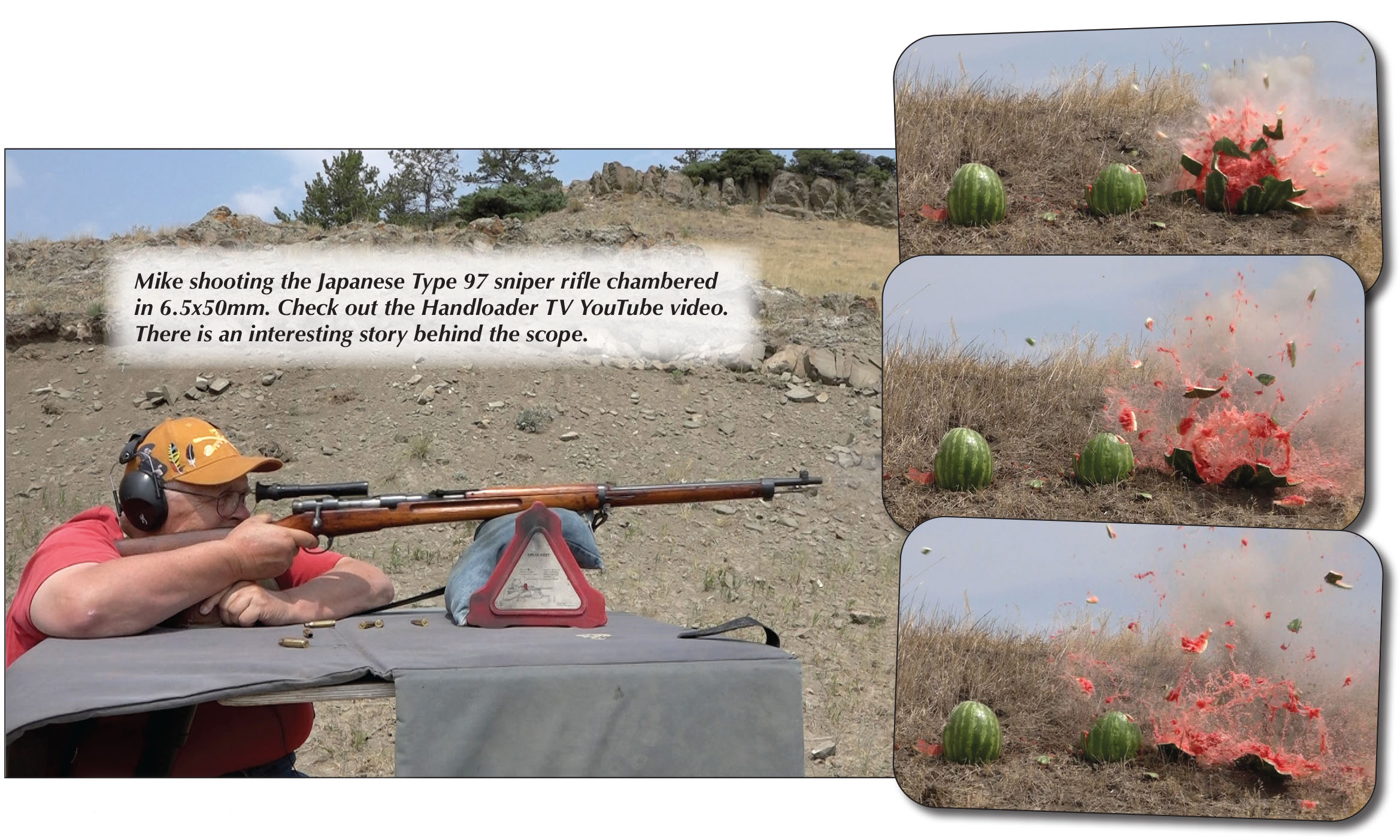Mike's Shootin' Shack
Handloader TV
column By: Mike Venturino | December, 21


To that end, in late July, Don, Jeremiah and Wolfe Publishing’s Art Director, Chris Downs, came to Montana where we could not only show the many guns of my collection to viewers, but could get shots of live firing with most. In the 1980s, I fulfilled a lifetime “bucket list” by acquiring enough property so that it is legal and safe to shoot rifles, handguns and full-autos on my 300-yard range, which is conveniently located near my home. (I did draw the line when one friend asked about shooting his original U.S. Army muzzle-loading mountain howitzer here.)
First, I should describe my collection a mite. If you watch what we did for Handloader TV don’t expect to see museum-quality specimens being handled with cotton-gloved hands. In building this collection, I focused on guns with dings and dents in their wood stocks and wear on their metal finishes, yet with decent to excellent barrel bores and in safe condition for firing. Some of these guns probably saw combat in World War II. I’m sure some of the Japanese rifles did, because they have intact chrysanthemum stamps atop of their actions. The “mums” were grinded off before handing souvenirs out to G.I.s after Japan surrendered. Japanese rifles with “mums” intact were likely battlefield pickups.
Actually, I didn’t set about to have such a collection of World War II small arms. It started with a K98k German 8mm Mauser. I bought it from a friend at a local gun show merely because it was in good shape and priced at only $300 – far less than the Winchesters, Colts and Sharps I normally searched for. However, as things sometimes go with us gun folks, my enthusiasm ran amuck as in, “If I have a German World War II rifle, then I need an American one also, and if I have those then I must include a Japanese one.” After a few years, my collection contained most of the handguns, carbines, infantry rifles, sniper rifles and many of the full-autos used by the most important combatant nations involved in that immense conflagration.
I am nothing if not a shooter, so all the handloading paraphernalia needed for shooting every one of these World War II small arms was gathered. Thousands of rounds were fired over the years to develop handloads duplicating military specifications of the ammunition used by their respective nations. These ranged from the 7.62x25mm Tokarev to .45 Auto for handguns and submachine guns and 6.5x50mm Japanese to 8x57mm German for rifles. It was all great fun. One that did cause me some confusion was the 7.7x56mm Japanese Rimmed that was the chambering of their Type 92 Naval Light Machine Gun, more commonly known to Americans as the “Lewis Gun.” The answer was simple. The metric name is the Japanese designation for .303 British!
To be honest, I was a bit apprehensive as the time approached for the Wolfe crew to arrive. I’ve been in front of movie cameras previously and didn’t like it. If I have to stare at the camera and talk, my tongue quickly becomes tied. Also, in no stretch of anyone’s imagination is my appearance akin to some of those reporters seen on TV.

I need not have worried as I was among friends. I’ve known Jeremiah since his preteens and we have visited and shot together over the years on my several visits to Prescott, Arizona. At 24, he is my idea of a fine young man, standing straight, strong and obviously used to the outdoors as well as being in front of the camera. Just as I was at that age, he soaks up firearms knowledge like a sponge, and secondly, he also has a love of horses.
His father, Don, and I have known each other since before he became publisher/president of Wolfe Publishing. I’ve never worked under a better man. Cameraman, Chris Downs, I knew less well, but here’s how I described him to my friend Ted Tompkins, who has traveled to Prescott with me often. Ted said, “I don’t remember Chris from our last trip.” I said, “He’s the guy who was a good shot.” A word about Ted. Everyone should have a friend like Ted. We have traveled to various firearms-related events going on 30 times now and are just as good friends on returning as when leaving. Without me even asking, he volunteered to be with us in this project, running errands, setting targets and fetching things I forgot to bring to the range. He adamantly refused to get in front of the camera. Without him, things would not have run so smoothly.
Videoing consisted of Jeremiah and I discussing the various types of guns lying on the table in front of us. It was easy and enjoyable, especially when I discovered Jeremiah was knowledgeable about our subject and asking pertinent questions. Then we spent range time with most of the firearms. The only real bump in our road was an embarrassment for me. I had neglected to clean the Japanese Lewis Gun after last shooting it about five years ago. It had to be broken down and cleaned well before it would function properly. My bad!
Handloader TV is going to present this series on World War II firearms in segments; each being dedicated to handguns, carbines, rifles, infantry rifles and full autos, but not necessarily in that order. If you decide to watch these, take note in the sniper rifle segment where I literally trash the Japanese sniper rifle when discussing it, but then have to eat crow when I fired it well on the range.
Maybe, just maybe, there might be a Handloader TV series in the future on Old West guns.


